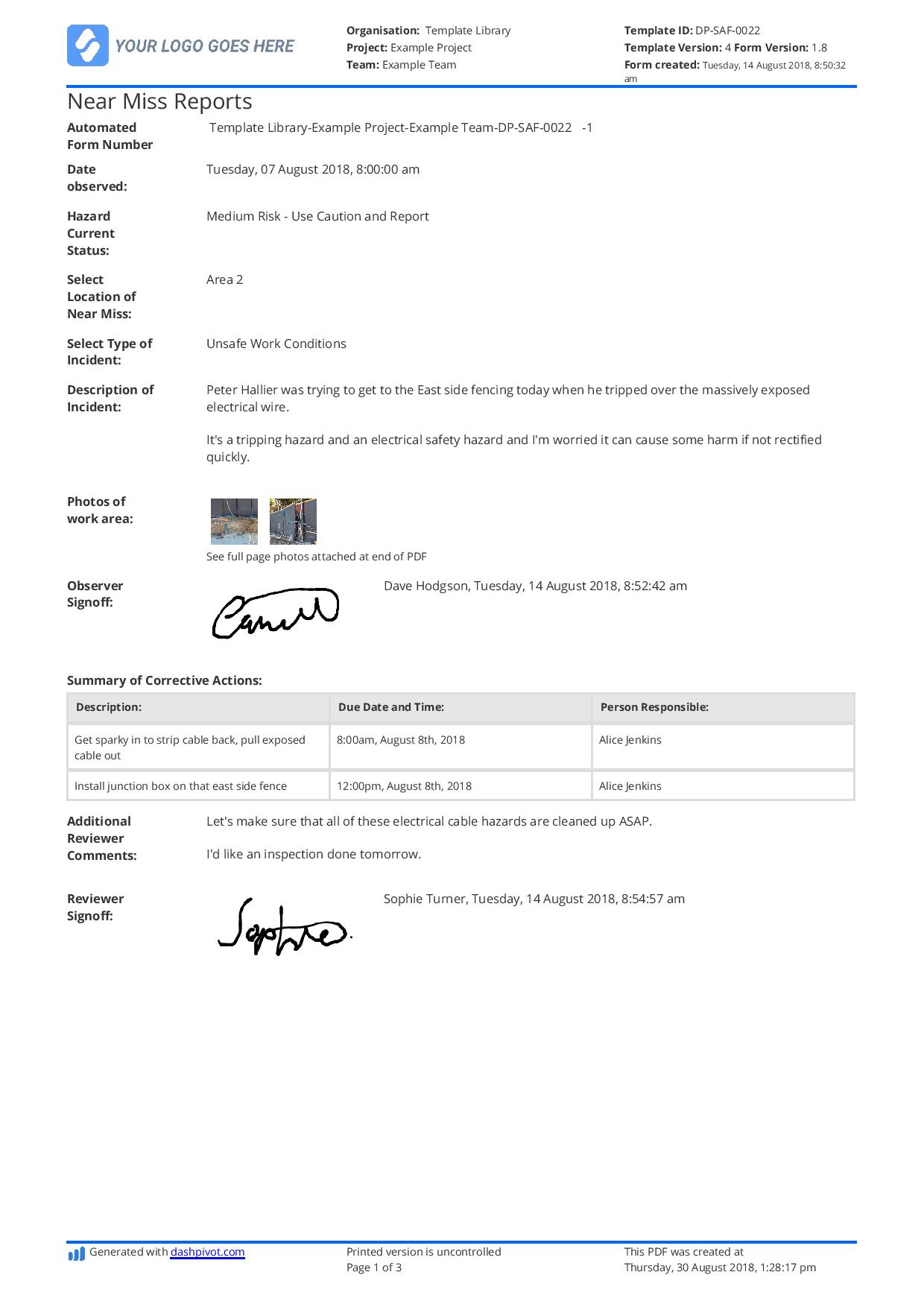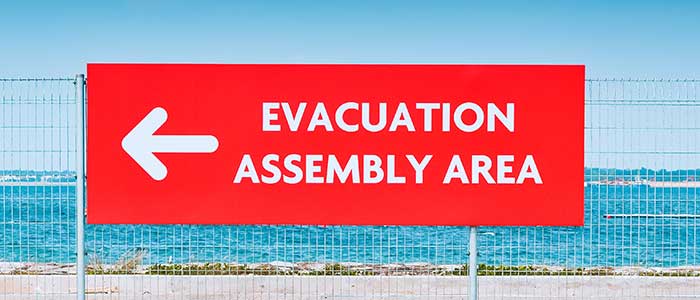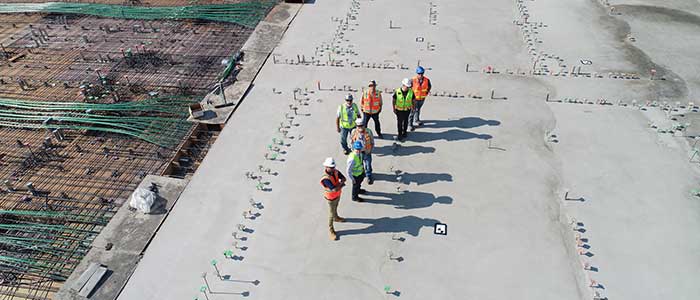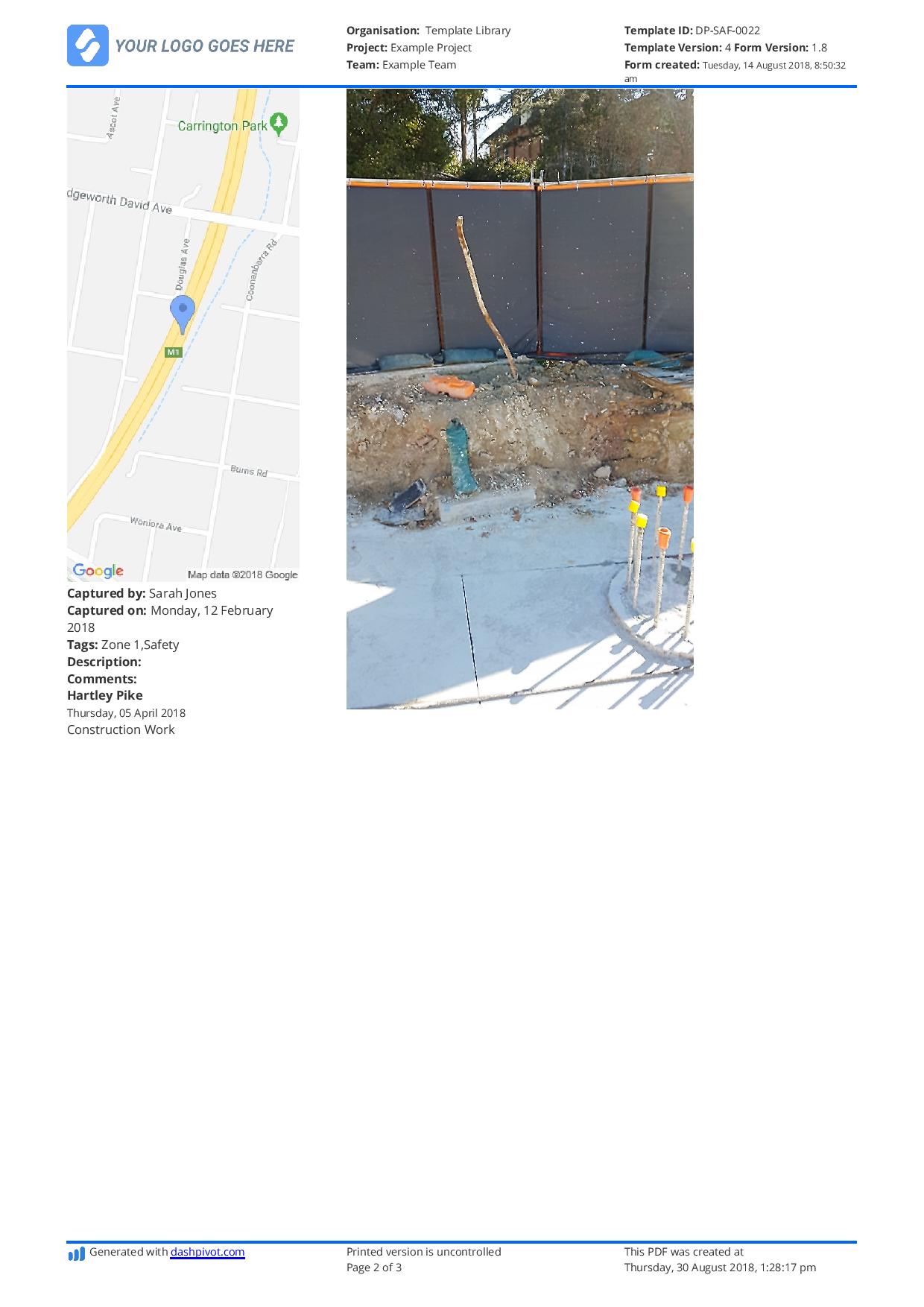Dashpivot article page – Near Miss Report form HSE

Near Miss Report Form HSE
What Role Does the Health and Safety Executive (HSE) Play in Workplace Safety?
The Health and Safety Executive (HSE) is the UK’s national regulator for employee health and safety in the workplace and ensures that the employees are protected and safe from hazards in the workplace operations and activities.
The HSE regulates health and safety standards, enforces legislations in maintaining workplace safety, and promotes risk management and safety training.
What Are the Main Purposes of the Near Miss Report Form HSE and Near Miss Reporting More Broadly According to HSE?
According to the HSE, the purpose of near miss reporting is for organisations to proactively single out hazards causing near misses in the workplaces. Near miss reporting is a safety practice for addressing hazards that ‘almost’ caused an accident, incident, injury, or damage. The key purposes of near miss reporting are laid out below.
Identification and Documentation of the Hazards
Organisations are able to identify the hazards by using a thorough near miss report form that outlines root cause analysis tools that guides workers and employees what to write. Additionally, documenting any near miss is a mandatory practice and a near miss report is a tool that records all the details, events, and other information relevant in identifying trends and patterns of hazards.
Decision-Making of Preventive Measures
A near miss report contains all the relevant information in one document which makes it easier for workers, employees, supervisors, safety officers, and the organisation to decide on the preventive measures to mitigate the identified hazards and avoid an actual accident.
Analytics & Improvement in Risk Assessment
As near misses are documented religiously using a near miss report form, organisations have data from all near misses and can retrieve those documents to analyse trends and patterns, identify which hazards are most common in a particular setting or site, and develop and implement proactive solutions for those hazards.
Compliance with Near Miss Report Form HSE & Industry Regulations and Standards
Near miss reports are essential in maintaining compliance with regulations and standards. If the near miss report forms are aligned with the HSE and industry standards, it makes compliance easier and audits seamless.
Reduction of Costs
Proper and prompt documentation of near misses directly contributes to the identification of potential hazards reduction of accidents and damages on site. This will also prevent further costs due to accidents, injuries, legal feels, loss of productivity, and medical expenses of affected workers or individuals.
A quality near miss report is one of the ways an organisation can encourage a workplace culture focused on safety, facilitate ongoing improvement, and promote accountability and awareness.
How Does Near Miss Reporting Relate to the Primary Objectives of the HSE?
Near miss reporting relates and contributes to the primary objectives of the HSE in ensuring employee safety from hazards in the workplace. Below are some of the primary objectives of the HSE and how near miss reporting aligns with them.
Establishes and Maintains Regulations
Since the HSE develops legislations related to employee safety, the near miss report can serve as a document that allows an organisation to comply with the enforced legislations of the HSE.
Inspects Workplaces
The HSE has bodies that conduct regular inspections especially to specific targets or areas that need to meet strict compliance. The inspections include identifying risks and potential hazards. Given that near miss reports include the hazards that caused the near misses, it will serve as a hazard identifier that helps the organisation identify the hazards before an actual accident occurs, and the inspectors from the HSE for their routine inspections to ensure that these hazards are managed by the organisation.
Investigates Incidents
The HSE includes near miss investigations and a near miss report serves as an important tool to document the near misses. They are especially helpful for the investigators and inspectors as they have records to base their reports for. A proper investigation can help both the organisation and the HSE generate informed decisions, which might lead to legal proceedings or actions.
Enforces Compliance
Naturally the HSE enforces compliance with their role in developing legislations for workplace safety. A proper near miss report and other documents from an organisation should comply with these legislations, especially on how to mitigate the hazards and risks that caused the near misses.
Promotes Risk Management Through Near Miss Reports and other Docs
With this objective from the HSE, a near miss report promotes a proper risk management system from developing a proper procedure in reporting near misses, to encouraging employees to report near misses in a no-blame culture, fostering a safety-first culture, to developing solutions to mitigate risk, and create analytics and dashboards to study patterns and trends.
Advocates a Positive Safety Culture
The HSE promotes a safety culture in the workplace and encourages all employees in an organisation to share responsibilities. A near miss report allows workers and employees to report potential hazards, unsafe conditions, and near misses to contribute to a safety culture without fear of blame or reprimand.
Raises Awareness Through Campaigns
The HSE conducts public campaigns that highlight on the important safety issues in the workplace, including the most common near misses occurring such as slips, trips, hazardous materials, falls, and more.
What Type of Information Does the HSE Recommend in a Near Miss Report Form?
For compliance, the HSE has recommendations on what to put in a near miss report form HSE. This will help organisations document detailed observations ensuring proper hazard management, analysis, and preventive measures.
For starters, it’s important to include the date, time, and specific location of the near miss. There should be a proper context on where it happened so that the organisation can continuously follow-up and monitor the area during the implementation of preventive measures.
Secondly, the near miss should be described in a clear and concise manner, without any opinions or biases. This should only contain the details of the incident, what happened, activities and operations that were taking place, the conditions prior to the event, and what conditions led to the near miss.
Next is to describe the potential harm or damage that could have occurred if it wasn’t a near miss, such as injuries to employees and workers, equipment damage, property damage or environmental harm.
Next is to document the immediate and obvious causes of the near miss. It’s important to document any unsafe practices being done during the activity or operation that caused the near miss. All accounts should be detailed and written. Using root cause analysis, it may also be ideal to include possible root causes. This will help the investigators understand where to start in developing solutions.
Next is the section of the people involved, including all of the witnesses. A section to include their perspective of the near miss may also be included if necessary. It’s important to assure the witnesses that the report will not assign blame.
The most important section is the corrective and preventive actions sections which the reporter would write on to outline the measures that were immediately done after the near miss incident. This should also include the recommendations they can suggest mitigating the risks and hazards.
Lastly the near miss report should include if there are any follow-up investigations to be done.

Create and customise a near miss report form HSE using this document
How Can Organisations Apply the HSE’s Recommendations for Near Miss Reporting?
The HSE’s recommendations for the contents of a near miss report help organisations build a helpful structure that captures the necessary details for a near miss. It should be taken note that oftentimes near misses are overlooked and workers may forget to report after a near miss. In order to avoid that, the structure must be accessible, easy to use, and easy to submit.
Dashpivot helps organisations make their near miss reporting convenient for everyone in the team. A near miss report can be accessible now because with Dashpivot, you can access the forms from your mobile devices and tablets. When a near miss occurs, workers and employees can just take their phones and tablets in any part of the site, type, and submit the report. You can even fill out your reports in offline mode and once you’re connected to the internet, the data will sync.
With Dashpivot, you can build your own near miss standardised form to comply with the recommendations of HSE. Create a flow to make it easier for your organisation to input and extract data by using pre-built forms in our public library, or you can create one yourself using the drag-and-drop feature using Text fields, Tables, Signatures, Formulas, Photos, Attachments, and many more. It’s easy to use, and easy to submit with just a couple of scrolls and clicks.
How Can Digital Tools Help Organisations Stay Compliant With Near Miss Reporting?
Dashpivot helps organisations streamline the entire near miss reporting process and flow. This can highly contribute to improving the accuracy of the details and enhancing data analysis.
Firstly, if a near miss report document can easily be accessed using a mobile or tablet, workers and employees can easily input data immediately right after the near miss. You can avoid the possibility of missing out on any information or inaccurate information. Witnesses can input their perspective lessening the chances the’ll forget it.
Dashpivot can help organisations centralise all of their near miss reports into one database, making it easier to extract information whenever you need to. You can also easily export reports into a pdf file if you need to. You can layer permissions for add-on security and only allow certain individuals access to documents to avoid anyone accidentally editing or deleting them.
Additionally, Dashpivot allows organisations to analyse data from your near miss reports. You can create analytics, dashboards, and charts to compare your near miss reports. This feature will help you identify trends and patterns of hazards occurring in specific areas and sites.
Dashpvivot can help enhance accessibility of your forms and accountability of all workers. Dashpivot, as your digital tool, can significantly improve the safety culture of your organisation and help maintain compliance with the HSE in terms of reporting standards.

Hazard Report template
Document and report hazards quickly and thoroughly to keep everyone safe.

Safety Improvement Plan template
Create coherent, actionable and professional safety plans using this proven framework.

Safety Toolbox Talk template
This toolbox talk template is quick and easy to complete and signoff on site, and keeps all of your toolbox talks neatly organised and professional.

